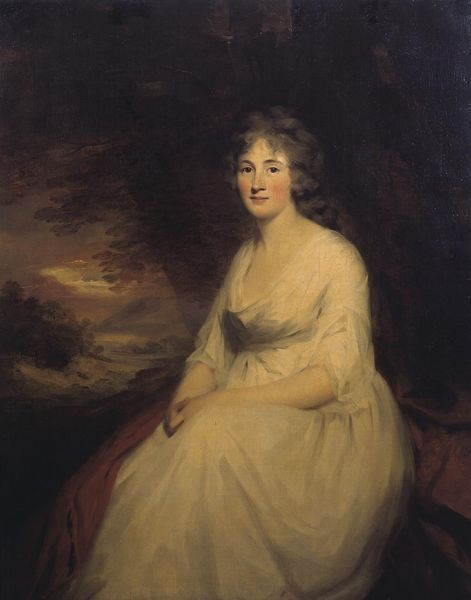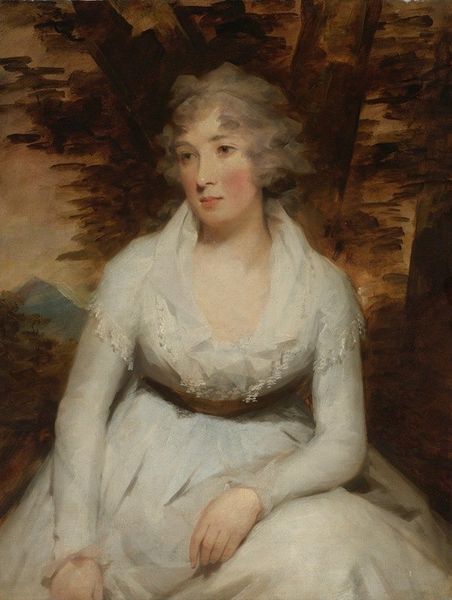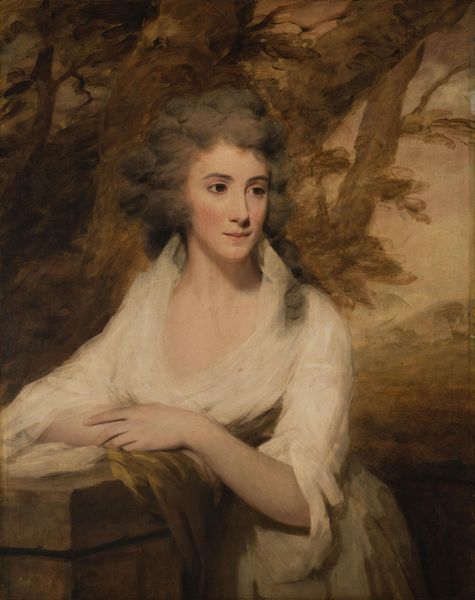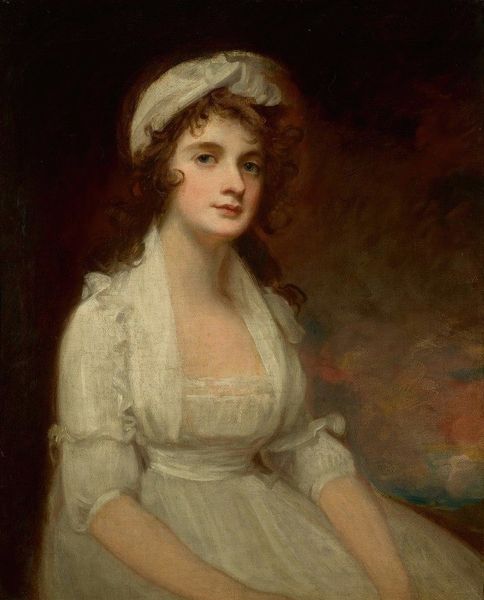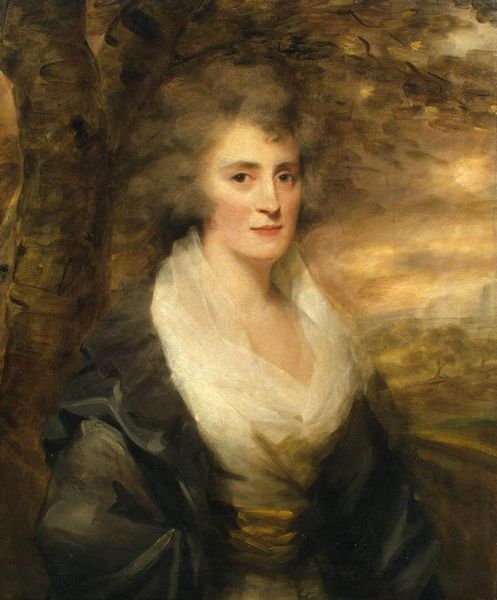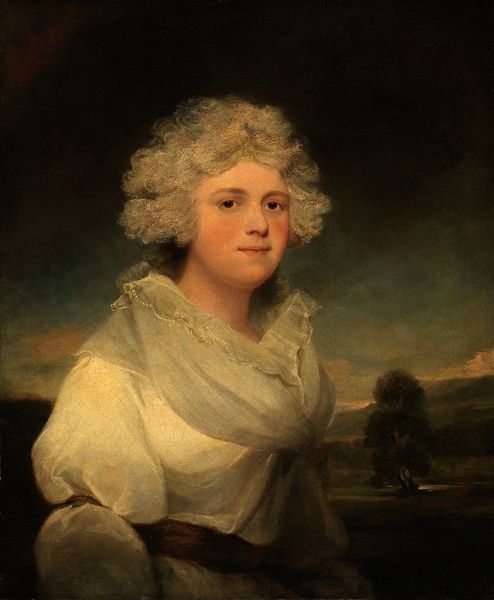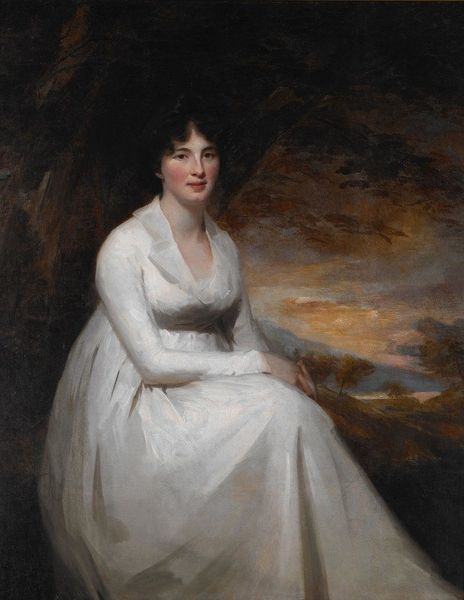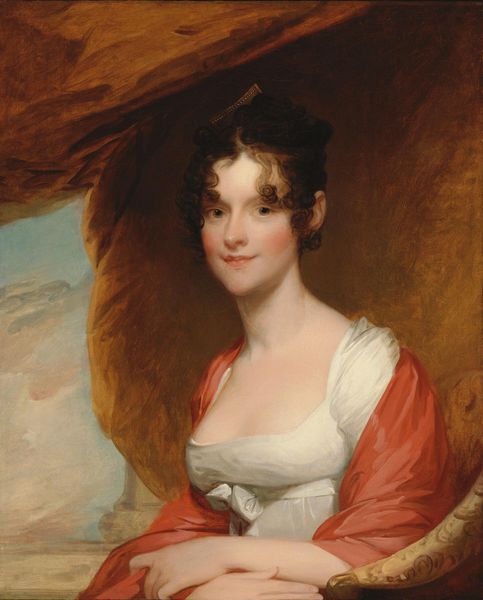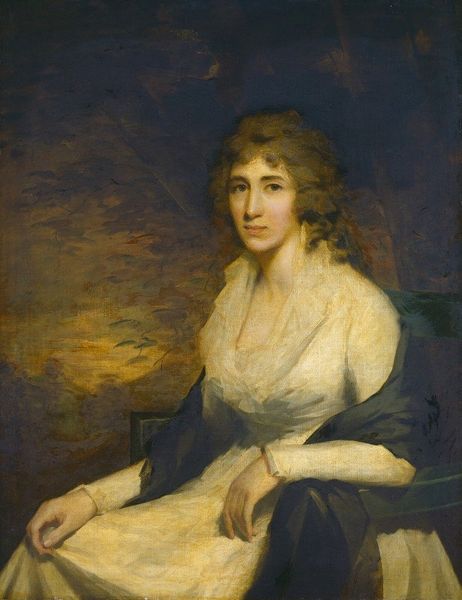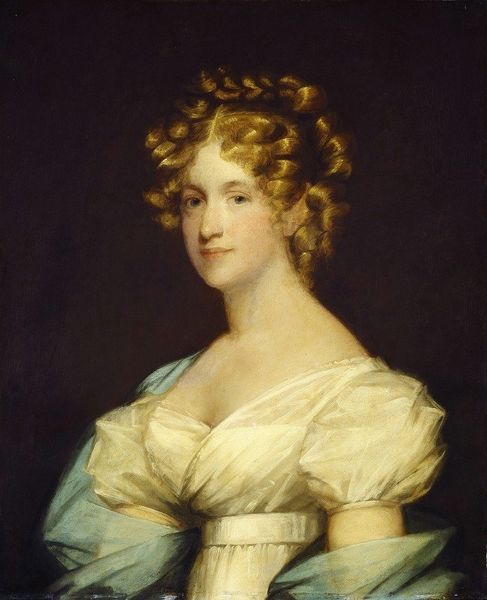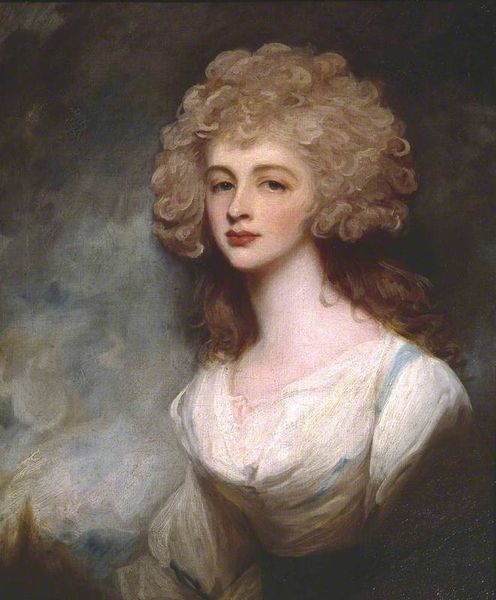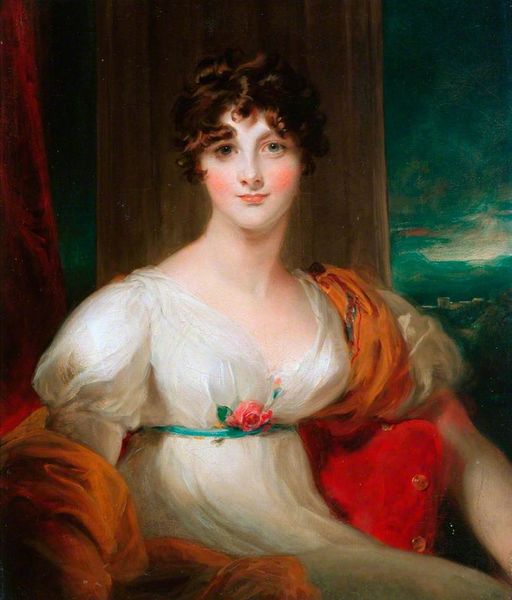
Dimensions: frame: 927 x 798 x 124 mm support: 743 x 610 mm
Copyright: CC-BY-NC-ND 4.0 DEED, Photo: Tate
Curator: Raeburn's "Mrs H.W. Lauzun," at the Tate Britain, presents a rather striking figure against a muted landscape. Editor: There's a certain vulnerability in her eyes, a softness that contrasts with the dark, undefined background. Curator: Indeed, the almost uniform whiteness of her gown is interesting. It’s probably linen or cotton, certainly a signifier of status, but also a reflection of textile production and trade at the time. Editor: The folds of the dress, the slight disarray of her hair – it all feels deliberately undone, hinting perhaps at a break from strict societal norms, though still conforming. Curator: I'm more focused on the labor and materiality that produce the impression of ease. What does it take to create such an image? Editor: While you focus on the making, I see a potent symbol of fleeting beauty, a visual echo of the Romantic era's fascination with emotional intensity. Curator: A fascinating intersection, wouldn't you agree? Editor: Indeed, a testament to the complex interplay between production and cultural meaning.
Comments
tatebritain 8 months ago
⋮
http://www.tate.org.uk/art/artworks/raeburn-mrs-hw-lauzun-n01837
Join the conversation
Join millions of artists and users on Artera today and experience the ultimate creative platform.
tatebritain 8 months ago
⋮
This painting depicts Anne Neale Lauzun (1776–1861), née Tucker. Born in Bermuda, her family were part of the British colonial administration. She spent her youth in Bermuda before moving to Edinburgh in 1792. Henry Raeburn painted this portrait in Edinburgh, possibly to commemorate Tucker’s marriage to Lieutenant Henry William Lauzun in 1796. The strong central light source and loose brushwork in this painting, reflect Raeburn’s cultivation of his own unique style as his career progressed. Gallery label, October 2023
